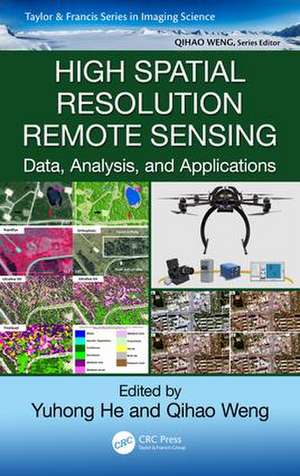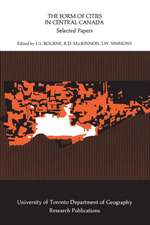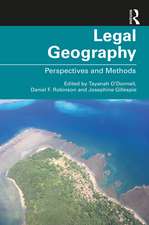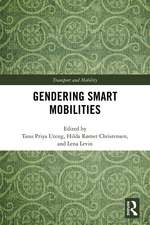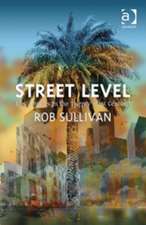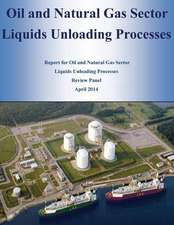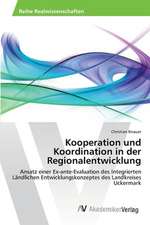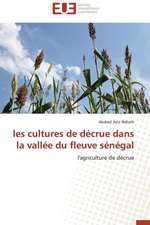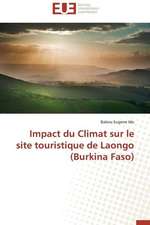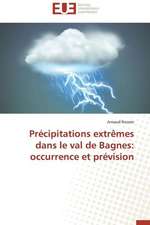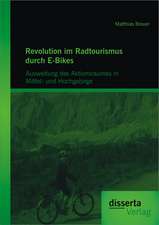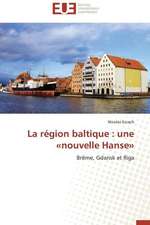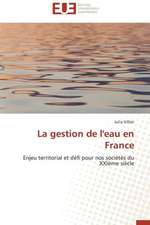High Spatial Resolution Remote Sensing: Data, Analysis, and Applications: Imaging Science
Editat de Yuhong He, Qihao Wengen Limba Engleză Hardback – 10 iul 2018
To effectively utilize information contained in high spatial resolution imagery, High Spatial Resolution Remote Sensing: Data, Analysis, and Applications addresses some key questions:
- What are the challenges of using new sensors and new platforms?
- What are the cutting-edge methods for fine-level information extraction from high spatial resolution images?
- How can high spatial resolution data improve the quantification and characterization of physical-environmental or human patterns and processes?
Preț: 1190.49 lei
Preț vechi: 1597.76 lei
-25% Nou
Puncte Express: 1786
Preț estimativ în valută:
227.80€ • 238.44$ • 189.60£
227.80€ • 238.44$ • 189.60£
Carte tipărită la comandă
Livrare economică 31 martie-14 aprilie
Preluare comenzi: 021 569.72.76
Specificații
ISBN-13: 9781498767682
ISBN-10: 1498767680
Pagini: 405
Ilustrații: 55 Tables, black and white; 24 Illustrations, color; 102 Illustrations, black and white
Dimensiuni: 156 x 234 x 28 mm
Greutate: 0.94 kg
Ediția:1
Editura: CRC Press
Colecția CRC Press
Seria Imaging Science
ISBN-10: 1498767680
Pagini: 405
Ilustrații: 55 Tables, black and white; 24 Illustrations, color; 102 Illustrations, black and white
Dimensiuni: 156 x 234 x 28 mm
Greutate: 0.94 kg
Ediția:1
Editura: CRC Press
Colecția CRC Press
Seria Imaging Science
Public țintă
Academic and Professional Practice & DevelopmentCuprins
Section I: Data Acquisition and Preprocessing 1. High-Resolution UAS Imagery in Agricultural Research: Concepts, Issues, and Research Directions 2. Building a UAV-Hyperspectral System I: UAV and Sensor Considerations 3. Building a UAV-Hyperspectral System II: Hyperspectral Sensor Considerations and Data Preprocessing 4. LiDAR and Spectral Data Integration for Coastal Wetland Assessment 5. Multiview Image Matching for 3D Earth Surface Reconstruction 6. High-Resolution Radar Data Processing and Applications Section II: Algorithms and Techniques 7. Structure from Motion Techniques for Estimating the Volume of Wood Chips 8. A Workflow to Quantify the Carbon Storage in Urban Trees Using Multispectral ALS Data 9. Suitable Spectral Mixing Space Selection for Linear Spectral Unmixing of Fine-Scale Urban Imagery 10. Segmentation Scale Selection in Geographic Object-Based Image Analysis 11. Computer Vision Methodologies for Automated Processing of Camera Trap Data: A Technological Review Section III: Case Studies and Applications 12. UAV-Based Multispectral Images for Investigating Grassland Biophysical and Biochemical Properties 13. Inversion of a Radiative Transfer Model Using Hyperspectral Data for Deriving Grassland Leaf Chlorophyll 14. Wetland Detection Using High Spatial Resolution Optical Remote Sensing Imagery 15. Geomorphic and Biophysical Characterization of Wetland Ecosystems with Airborne LiDAR: Concepts, Methods, and a Case Study 16. Fraction Vegetation Cover Extraction Using High Spatial Resolution Imagery in Karst Areas 17. Using High Spatial Resolution Imagery to Estimate Cherry Orchard Acreage in Michigan
Notă biografică
Dr. Yuhong He is an Associate Professor of geography at University of Toronto, Canada. She received her Ph.D. degree in geography from the University of Saskatchewan in 2008 and worked as a Postdoctoral fellow from 2008-2009 in Environmental Remote Sensing lab under supervision of Dr. Steven Franklin. She joined the University of Toronto as an assistant professor in 2009 and since then, she has taught courses on introductory remote sensing, advanced remote sensing, remote sensing-GIS.
Qihao Weng is the Director of the Center for Urban and Environmental Change and a Professor at Indiana State University, and worked as a Senior Fellow at the National Aeronautics and Space Administration from December 2008 to December 2009. He received his Ph.D. degree from the University of Georgia in 1999. Weng is currently the Lead of Group on Earth Observation (GEO) Global Urban Observation and Information Initiative, and serves as an Editor-in-Chief of ISPRS Journal of Photogrammetry and Remote Sensing and the Series Editor of Taylor & Francis Series in Remote Sensing Applications. He has been the Organizer and Program Committee Chair of the biennial IEEE/ISPRS/GEO sponsored International Workshop on Earth Observation and Remote Sensing Applications conference series since 2008, a National Director of American Society for Photogrammetry and Remote Sensing from 2007 to 2010, and a panelist of U.S. DOE’s Cool Roofs Roadmap and Strategy in 2010. In 2008, Weng received a prestigious NASA senior fellowship. He is also the recipient of the Outstanding Contributions Award in Remote Sensing in 2011 and the Willard and Ruby S. Miller Award in 2015 for his outstanding contributions to geography, both from the American Association of Geographers. In 2005 at Indiana State University, he was selected as a Lilly Foundation Faculty Fellow and in the following year, he also received the Theodore Dreiser Distinguished Research Award. In addition, he was the recipient of 2010 Erdas Award for Best Scientific Paper in Remote Sensing (1st place) and 1999 Robert E. Altenhofen Memorial Scholarship Award, which were both awarded by American Society for Photogrammetry and Remote Sensing. He was also awarded the Best Student-Authored Paper Award by International Geographic Information Foundation in 1998. Weng has been invited to give 100 talks by organizations and conferences held in U.S.A., Canada, China, Brazil, Greece, UAE, and Hong Kong. Weng’s research focuses on remote sensing applications to urban environmental and ecological systems, land-use and land-cover changes, urbanization impacts, environmental modeling, and human-environment interactions. Weng is the author of 210 articles and 10 books. According to Google Scholar, as of October 2017, his SCI citation reached 12,227 (H-index of 50), and 28 of his publications had more than 100 citations each. Weng’s research has been supported by funding agencies that include NSF, NASA, USGS, USAID, NOAA, National Geographic Society, European Space Agency, and Indiana Department of Natural Resources.
Qihao Weng is the Director of the Center for Urban and Environmental Change and a Professor at Indiana State University, and worked as a Senior Fellow at the National Aeronautics and Space Administration from December 2008 to December 2009. He received his Ph.D. degree from the University of Georgia in 1999. Weng is currently the Lead of Group on Earth Observation (GEO) Global Urban Observation and Information Initiative, and serves as an Editor-in-Chief of ISPRS Journal of Photogrammetry and Remote Sensing and the Series Editor of Taylor & Francis Series in Remote Sensing Applications. He has been the Organizer and Program Committee Chair of the biennial IEEE/ISPRS/GEO sponsored International Workshop on Earth Observation and Remote Sensing Applications conference series since 2008, a National Director of American Society for Photogrammetry and Remote Sensing from 2007 to 2010, and a panelist of U.S. DOE’s Cool Roofs Roadmap and Strategy in 2010. In 2008, Weng received a prestigious NASA senior fellowship. He is also the recipient of the Outstanding Contributions Award in Remote Sensing in 2011 and the Willard and Ruby S. Miller Award in 2015 for his outstanding contributions to geography, both from the American Association of Geographers. In 2005 at Indiana State University, he was selected as a Lilly Foundation Faculty Fellow and in the following year, he also received the Theodore Dreiser Distinguished Research Award. In addition, he was the recipient of 2010 Erdas Award for Best Scientific Paper in Remote Sensing (1st place) and 1999 Robert E. Altenhofen Memorial Scholarship Award, which were both awarded by American Society for Photogrammetry and Remote Sensing. He was also awarded the Best Student-Authored Paper Award by International Geographic Information Foundation in 1998. Weng has been invited to give 100 talks by organizations and conferences held in U.S.A., Canada, China, Brazil, Greece, UAE, and Hong Kong. Weng’s research focuses on remote sensing applications to urban environmental and ecological systems, land-use and land-cover changes, urbanization impacts, environmental modeling, and human-environment interactions. Weng is the author of 210 articles and 10 books. According to Google Scholar, as of October 2017, his SCI citation reached 12,227 (H-index of 50), and 28 of his publications had more than 100 citations each. Weng’s research has been supported by funding agencies that include NSF, NASA, USGS, USAID, NOAA, National Geographic Society, European Space Agency, and Indiana Department of Natural Resources.
Descriere
High spatial remote sensing data have been often used as valuable sources of information throughout emergency management cycle. Information extracted in high spatial remote sensing data right after a devastating earthquake can help assess the earthquake's damage of roads and buildings and make emergency plans for contact and evacuation. The book will discuss emerging high spatial resolution data sources, and detail novel techniques and applications for handling, retrieving, and making best use of high spatial resolution remote sensing data.
